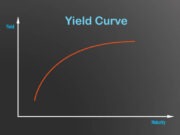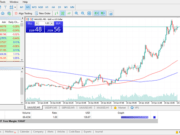
The terms deflation and inflation are often used in the context of economics and they refer to the opposite trend in prices of goods and services in an economy. While inflation means a steady rise in prices over time, deflation refers to the opposite, a steady decline in prices.
Both inflation and deflation have significant impacts on the economy and the general public, affecting everything from the cost of living to investments. In this blog post, let us discuss what deflation and inflation are, their respective consequences, and how they impact our daily lives.
Firstly, let’s define inflation. Inflation is when the price of goods and services consistently rises over a period of time, reducing the purchasing power of money. High inflation results in an increase in the cost of essential goods and services, such as food and housing, making them more expensive for the consumer. This can lead to socio-economic issues like poverty, income inequality, and unemployment, as low-income earners are less able to afford the higher prices. On the other hand, mild inflation can be beneficial for both businesses and consumers, as it promotes growth and investment, and encourages people to spend more.
Now, let’s turn our attention to deflation. Deflation is when the prices of goods and services consistently decline over a period of time, which sounds like a good thing for consumers. However, deflation can have severe economic consequences, and it can lead to a vicious cycle which is hard to break. During deflation, businesses earn less revenue, which leads to a reduction in job opportunities, as companies struggle to pay salaries. This, in turn, leads to a decrease in consumer spending, as people are anxious about job security and the economy. When no one is spending, businesses in turn reduce prices to attract consumers, further increasing deflation, and making the economy contract faster and deeper.
Once we have understood what inflation and deflation are, it’s time to talk about their impact on investments. Inflation can affect investments in several ways. For example, stocks and bonds may become less attractive in times of high inflation, as higher interest rates can make bonds more appealing than stocks. On the other hand, commodities like gold often perform well during times of high inflation, as they are seen as a hedge against inflation. In contrast, investment strategies during deflation vary widely depending on the individual scenario, as defensive investments generally perform better than more volatile investments.
As consumers, we experience both deflation and inflation in our daily lives, and we must understand the implications of both. During inflation, we need to adjust our budgets and spending habits to account for the rising prices of goods and services. We may also need to consider investing in defensive assets like government bonds or gold to protect our savings from inflation. On the other hand, during deflation, we need to be cautious about spending and hoarding our savings as prices continue to decline. Because deflation leads to a reduction in jobs and investments, it’s essential to keep an eye on the overall health of the economy, and consider diversifying our portfolios with defensive investments.
Conclusion:
Inflation and deflation are not just technical terms used by economists, but they affect our daily lives and financial decisions. Understanding the difference between deflation and inflation is crucial for our personal finances, as well as the economy as a whole. While mild inflation can be beneficial for the economy, high inflation or deflation can lead to serious economic consequences. Therefore, it’s essential to pay attention to economic indicators and to adjust our budgets, investments, and spending habits accordingly. Hopefully, this blog has provided a useful overview of deflation and inflation, and their potential impact on the wider economy.


































